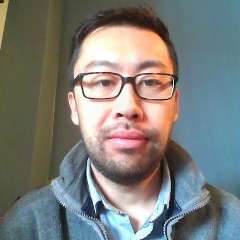The Mostly Mozart Festival continued Sunday afternoon with another program of new music – quite literally, as all were world premières – from two more young composers. Tyshawn Sorey, in addition to being a composer, is a jazz instrumentalist and improviser, though the distinction between composer and improviser quickly breaks down in his practice. The first work on the program, Acts II, is written for a sextet of musicians who receive only written instructions instead of notes to guide the execution of the piece. This “handwritten music” is, for Sorey, essential for the creation of a more human connection between performers and the music they play.
I am not sure if I would describe the result as more “human”, whatever that may mean. But the effect of handwritten instructions on the performers is certainly palpable. For one, the musicians’ way of using their bodies is different. The tightness and steely-eyed focus of a modern interpreter fixated on a score is replaced with a much looser and sometimes dreamlike physicality in which performers grope across the span of their instruments, as if feeling their way to the notes they need.
This is most obvious in the cases of the pianist and percussionist, though Sorey’s own improvisations on trombone took greatest advantage of the immediacy between thought and execution that is possible in the absence of notes. Sorey’s performance was a virtuoso achievement of energy and barely restrained wildness – I think he screamed into his trombone a few times – his body and his instrument becoming the core of this otherwise loosely-integrated work. Given a freedom from the dominance of pitch, noise naturally becomes an ascendant category, and Sorey’s performance shows what the possibilities of noise (rather than merely the freedom from pitch) can be.
Sorey’s music is less convincing when it is less propulsively energetic, as when Acts II trails off with a quasi-fughetta, or when his second work, New York/Copenhagen, begins with a rather strange and formalized passage in the violin. It is not that Sorey should stop exploring outside of what he does best, but that the notated and the improvised have yet to find a way to communicate with one another in his music.
Felipe Lara, the second composer on the program, opened with a work that also places focus on gesture over pitch, although his method is more organized than Sorey’s. Som(bra), for an alto and a bass flute, allows two performers who face each other to echo and provoke one another, sometimes sending ricochets of explosive breath back and forth, or creating soft resonances of harmonic-like effects that are produced by singing into the flute. Because the piece is driven by the energy of bodies in confrontation, it is a far more pleasurable and coherent work than Tiento, a chamber piece which follows the formally loose model of a fantasia. As Lara writes, “tiento” refers not only to the loosely structured genre but also to the sound and style of 16th-century Spanish organ music, to a guitar-driven folk music similar to flamenco, and to the idea of touching, or attempting. It is the first and the last of these resonances of the word that worry me, for there is something frustrating about watching a precise conductor lead a group of musicians obediently following scores in a performance that is meant to inspire a sense of exploration. It may have been fortuitous, then, for Lara to appear on a program with Sorey: handwritten music could be just the thing that this work needs.


